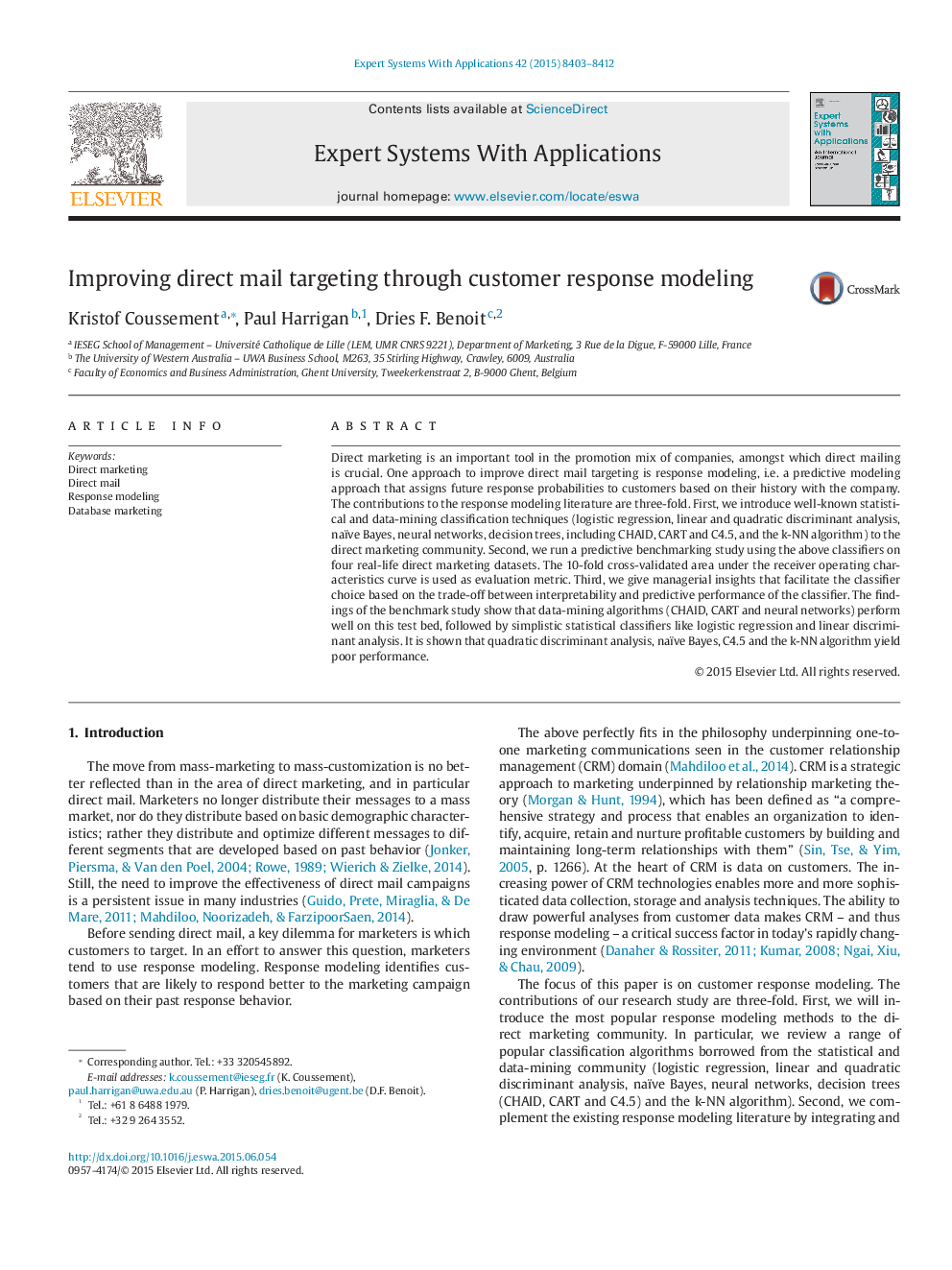ترجمه فارسی عنوان مقاله
بهبود هدف گذاری ارسال مستقیم از طریق مدل سازی پاسخ به مشتری
عنوان انگلیسی
Improving direct mail targeting through customer response modeling
| کد مقاله | سال انتشار | تعداد صفحات مقاله انگلیسی |
|---|---|---|
| 39889 | 2015 | 10 صفحه PDF |
منبع

Publisher : Elsevier - Science Direct (الزویر - ساینس دایرکت)
Journal : Expert Systems with Applications, Volume 42, Issue 22, 1 December 2015, Pages 8403–8412
ترجمه کلمات کلیدی
بازاریابی مستقیم - ایمیل مستقیم - مدلسازی پاسخ - بازاریابی پایگاه داده
کلمات کلیدی انگلیسی
Direct marketing; Direct mail; Response modeling; Database marketing

